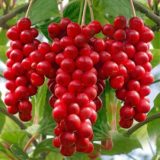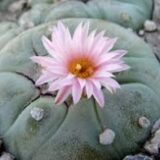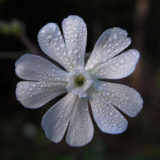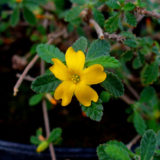What Are the Best Natural Analgesic Herbs?

Best Herbal Analgesics [Herbal Pain Relievers]
People from around the world have enjoyed a variety of natural pain relieving herbs in a diverse many preparations. These natural analgesics are sometimes taken as a herbal tea, a topical gel or lotion, or consumed as a pill. Tribes and their medicine men, doctors and cultures around the world have used some of these natural recipes and traditional preparations for their incredible pain relieving properties for thousands of years. Natural pain relief and analgesic is often considered by modern, Western culture to be “ineffective,” very erroneously, largely due to a lack of information. In fact, many people have outright begun to associate the term “herbal” with “ineffective,” which is again, a mistake. The fact of the matter when it comes to 100 percent natural, botanical pain relief is there are very real, organic, and powerfully effective, natural analgesics and pain relievers.
List of Herbal Analgesics and Natural Pain Killers
Although there is a potentially indefinite list (at least in these times) of plants which may provide analgesic effects, these are the most widely known and employed natural herbs used for pain relief. This list of natural analgesics and pain relievers are in alphabetical order.
Arnica (Arnica montana)
Arnica is also known as “Mountain Tobacco” and “Mountain Snuff.” It is native most prominently in North America, but grows in some places throughout Central Europe. The flowers are pretty yellow daisies, but the herb has amazing healing abilities, especially when it comes to muscle injury, bruising, arthritis and aches of all kinds. Typically Arnica is applied as a lotion or gel, making it a topical analgesic. Arnica is found used in many traditional Native American healing practices.
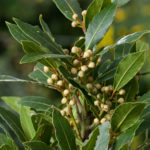 Bay (Laurus nobilis)
Bay (Laurus nobilis)
Bay has been known for many years, even having uses in Ancient times. It has a lot of folklore associated with its existence, cultivation and use. Today, it is a very common to find Basil used in a number of culinary concoctions. The plant itself is native to the Mediterranean region of Europe, though is cultivated throughout many regions of the world today. Bay oil has been long known to help heal and treat arthritis, aches and pain. It can help treat earaches, muscles aches and sprains. The oil is retrieved from the berries and considered a strong pain reliever.
Calendula (Calendula officinalis)
Calendula is a beautiful orange-to-yellowish flower that looks like a cross between an African marigold and a daisy. The plant, its seeds and extracts have been used as spices and additives to a variety of culinary creations for centuries. However, it was medicinally employed during the Civil War and World War I to treat gangrene. It has also been used to treat cuts, ulcers, burns, bruises, sprains, and other skin-injuries. This is probably thanks to its high terpene content. Calendula has been appreciated for centuries, even being mentioned in Shakespeare’s time. As an analgesic, it is typically administered as a tea or tincture.
Chamomile (Matricaria recutita or Chamaemelum nobile)
Chamomile was originally native and most popular in Europe. It has been a favorite tea of the continent for thousands of years. There are countless preparations which are considered traditional for herbal chamomile tea. Chamomile is well known to bind to the same receptors in the brain as Valium, which is why it is such a strong sedative as well as having a potential ability to treat a number of pains and ailments (research still underway).
 Feverfew (Tanacetum parthenium)
Feverfew (Tanacetum parthenium)
Feverfew is known by what some may consider a “cult following” for its incredible migraine-relieving abilities. Feverfew was first prescribed for nearly all inflammations, even including fever, by the Greek physician Dioscorides. Feverfew has been proven in modern studies to help reduce migraine headaches, arthritis and all rheumatism. Feverfew works by inhibiting hormone and histamine release, which slops the blood vessels from having spasms, maintaining a more consistent vascular flow and eliminating the migraine. Feverfew is thus considered by many a much more effective pain reliever than even modern headache medicine, and the best part? It is completely natural.
Hops (Humulus lupulus)
Hops has been used for thousands of years by many cultures for many things. Mostly it is used for ornamental, culinary or medicinal value. As an analgesic, it has been used in many traditional medicines to treat migraines, infections and a few other ailments. Hops is a natural sedative as well, providing a relaxing experience in the right dose and/or concoction, thus making it a natural pain relieving herb that is highly sought after. It is a very common ingredient in beers, for many reasons, but the added benefit of an analgesic, pain relieving, relaxation, is most certainly a bonus!
Kratom (Mitragyna speciosa)
Kratom is native to tropical regions, especially Southeast Asia, where it is commonly cultivated. It is a member of the coffee family, and a very popular stimulant throughout its native region, and now Western Culture. Kratom interacts with the opioid receptors in the brain, and thus, it has also used as a powerful pain reliever. Kratom is typically prepared as a ceremonial or herbal tea, in powdered capsules, or as a resin or extract. Many Kratom advocates swear by its amazing ability to treat chronic pain, though it is currently under fire by the FDA and DEA, and may get banned soon. Many countries around the world, and many states in the United States, have already banned Kratom. Still, it remains a very powerful herbal analgesic.
Meadowsweet (Filipendula ulmaria)
Meadowsweet is native to Europe and Asia. It has many uses, including culinary, medicinal, clothing dyes, and for fragrance. Meadowsweet typically has a foul smell, and the flowers can look a little musty. As bad as it may smell, it has been used as a sweet flavor additive as the leaves and flowers contain a ton of sugar. It is very commonly brewed into a tea. It has been used to treat diarrhea, peptic ulcers, and kidney stones. It is very commonly used as a natural analgesic and pain reliever. In fact, the original genus name was Spiraea, which translates to ‘aspirin.’ The ‘aspirin’ produced by Meadowsweet, however, does not do any damage to the stomach lining…in fact, it may even have some super powers such as being antiviral.
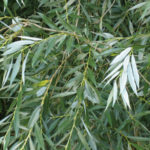 White Willow (Salix alba)
White Willow (Salix alba)
White Willow is a medium-sized tree, growing up to 30 meters tall. The plant has a long history of being used as a natural pain reliever, dating all the way back to even Hippocrates. It was believed to be able to treat aches and pains of all types. It was also used to treat fevers and headaches. Typical ancient medicine used the bark to create a tincture, this practice being continued even in more recent times (being recorded as successfully treating malarial fever in a 1763 experiment).
Aspirin is a chemical derivative of salicin, the active compound in White Willow bark responsible for its analgesic properties. Without the natural pain relieving properties which were first isolated and researched from White Willow bark, the modern aspirin of today would not exist. Still, the natural version of the pain reliever (that comes from White Willow, or Meadowsweet) is argued by many natural pain relief herb advocates to be much better for the health.
Last Words on Using Natural Herbs for Pain
The hunt for effective, natural pain relief herbs is an exhausting one for many people. In fact, some people have tried many “natural remedies for pain” over the course of years, only to still come up short. Unfortunately, some of the herbal analgesics popularized are used in ways that would never be effective (too little quantity, not combined with the right supplemental herbs, or prepared incorrectly), thus reinforcing the incorrect rumors that the plant may be ineffective for treating pain. Therefore, it could be said that it is wise advice and equally important to fully research and understand the traditional preparation, dosing, and administration methods for any natural pain relieving herb.
Disclaimer: BotanicalShaman.com authors are not medical doctors. By law, it is important we explaint hat this article is for informational purposes only. If you are in pain, it is suggested you seek medical advice.
